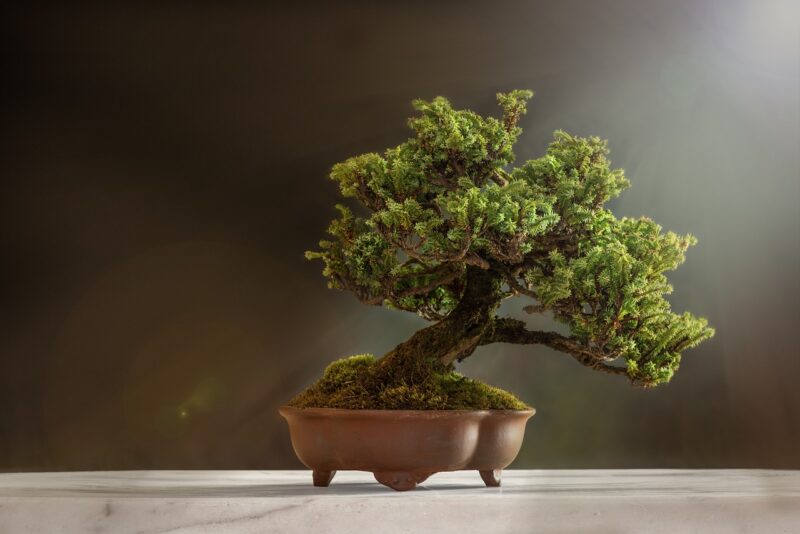The Art of Bonsai: How to Get Started with This Ancient and Meditative Hobby
November 14, 2024

Bonsai is more than just a hobby; it’s a form of art that brings tranquility, focus, and a deep appreciation for nature. Originating from ancient Chinese horticultural practices and later refined in Japan, the art of bonsai involves cultivating small trees in containers, replicating the look of mature, full-sized trees. In this article, we will explore the history of bonsai, the techniques involved in creating a bonsai tree, and how you can begin your journey into this rewarding pastime.
1. A Brief History of Bonsai
The origins of bonsai can be traced back over a thousand years to the practice of growing miniature trees in pots in China, known as ‘penjing.’ Initially, these small trees were used to symbolize power and status among the elite. As this art form evolved, it made its way to Japan, where it transformed into bonsai, emphasizing aesthetics and spiritual significance.
Throughout the centuries, bonsai has been embraced worldwide, celebrated for its meditative qualities as well as its reflection of patience and dedication. Today, bonsai represents not just a gardening activity, but a means of connecting oneself with nature.
2. Understanding the Basics of Bonsai
Bonsai is about more than just the tree itself; it’s about the techniques and the philosophy behind creating a miniature version of nature’s magnificence. Here are the fundamental concepts to grasp before diving in:
- Scale and Proportion: Understanding how to maintain the appearance of scale is crucial in bonsai. The tree should reflect the proportions of a mature tree set in nature, but in miniature form.
- Training Techniques: This includes pruning, wiring, and repotting to manipulate the tree’s growth into a desired shape.
- The Right Species: Different species of trees respond uniquely to bonsai techniques. Some popular choices for beginners include Ficus, Juniper, and Pine.
- Care and Maintenance: Regular watering, light exposure, and nutrients are vital. Understanding the climate and environment preferences of your chosen species is important for its health and growth.
3. Getting Started: The Essential Tools
To embark on your bonsai journey, a few essential tools will help you cultivate and care for your tree effectively:
- Bonsai Shears: These specialized tools are essential for pruning branches and leaves with precision.
- Wire: Used for training the branches and giving your tree its desired shape.
- Bonsai Pot: Choose a pot that allows for adequate drainage and matches the aesthetic of your design.
- Soil Mix: A well-draining bonsai soil mix is crucial for promoting healthy root development, typically consisting of akadama, pumice, and lava rock.
- Watering Can and Mist Spray Bottle: Regular watering is essential, along with misting the foliage to maintain humidity.
4. Choosing Your First Bonsai Tree
When you decide to start with bonsai, selecting the right tree can significantly influence your experience:
- Ficus: Known for its resilience and ability to thrive indoors, the Ficus tree is perfect for beginners.
- Juniper: An outdoor favorite, junipers provide excellent texture and foliage for styling.
- Japanese Maple: Stunning in color, these trees can be more challenging but are rewarding for their beauty.
Where you purchase your tree matters as well; consider starting with a reputable bonsai nursery or garden center.
5. Basic Techniques in Bonsai Cultivation
Once you have your tree, you can start employing basic techniques:
Pruning
Pruning is critical to encourage healthy growth and shape your tree. Cutting back new growth will promote branching and fullness. Begin by removing leaves and shoots that are crossing or causing dense clusters of growth.
Wiring
Wiring allows you to train your tree’s branches into specific shapes. Wrap soft aluminum or copper wire around branches; make sure to not apply too tightly as this can damage the tree. Wire should be removed as the branches grow to avoid long-term damage.
Repotting
Every few years, your bonsai will need repotting to allow for proper growth and health. This involves refreshing the soil and trimming the roots while ensuring the tree maintains its size in its new pot.
6. Cultivating Patience and Mindfulness
Bonsai isn’t just about growing a plant; it’s about cultivating a mindset. The process requires immense patience and practice, much like any art form. Each tiny cut and twist is a step towards nurturing not just the tree, but a deeper connection to nature.
It’s a meditative practice that can provide a sense of tranquility and fulfillment amidst the chaos of daily life. Engaging with bonsai teaches us to appreciate the slow passage of time, highlighting the importance of careful nurturing and attention.
Conclusion: Your Bonsai Journey Awaits
Starting a bonsai can be profoundly rewarding, providing both a hobby and a peaceful retreat from life’s pressures. Whether you choose to nurture a single Ficus indoors or attempt to create a more elaborate landscape with Junipers, the key is to engage with the process, learn, and grow alongside your tree.
As you delve into this art form, remember that mistakes are part of the learning curve; every bonsai artist develops their unique style through experiences. Begin by nurturing your understanding of the basics, and soon you will craft not just a bonsai, but a beautiful synthesis of nature and art.
So gather your tools, select your first tree, and embrace the fascinating world of bonsai. Your journey into this ancient and meditative hobby starts now.






